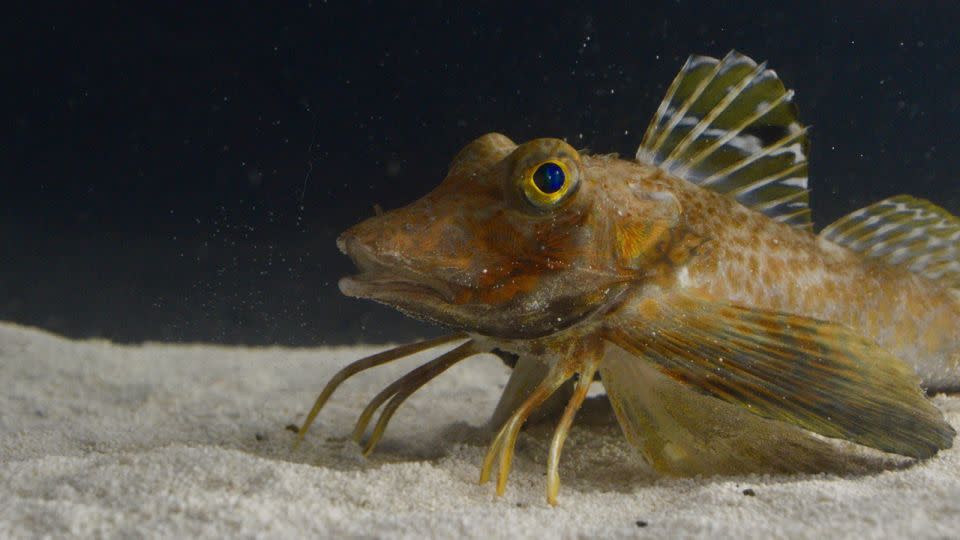Editor’s note: A version of this story appeared in CNN’s Wonder Theory science newsletter. To get it in your inbox, sign up for free here.
Today, the lush, green valley surrounding the Tollense River in northeast Germany appears to be a serene place to appreciate nature.
But to archaeologists, the Tollense Valley is considered Europe’s oldest battlefield.
An amateur archaeologist first spotted a bone sticking out of the riverbank in 1996.
A series of ongoing site excavations since 2008 has shown that the thousands of bones and hundreds of weapons preserved by the valley’s undisturbed environment were part of a large-scale battle 3,250 years ago.
The biggest mysteries that researchers aim to uncover are why the battle occurred and who fought in it. These are questions that they are now one step closer to answering.
A long time ago

Dozens of bronze and flint arrowheads recovered from the Tollense Valley are revealing details about the able-bodied warriors who fought in the Bronze Age battle.
The research team analyzed and compared the arrowheads, some of which were still embedded in the remains of the fallen. While many of these weapons were locally produced, some bearing different shapes came from a region that now includes modern Bavaria and Moravia.
The outliers’ presence suggests that a southern army clashed with local tribes in the valley, and researchers suspect the conflict began at a key landmark along the river.
Back to the future
Scientists are harnessing the power of artificial intelligence to detect hidden archaeological sites buried below the sand of the sprawling Rub‘ al-Khali desert.
The desert spans 250,000 square miles (650,000 square kilometers) on the Arabian Peninsula, and its name translates to “the Empty Quarter” in English. To unravel the secrets of the desolate terrain, researchers are combining machine learning with a satellite imagery technique that uses radio waves to spot objects that may be concealed beneath surfaces.
The technology will be tested in October when excavations assess whether predicted structures are present at the Saruq Al Hadid complex in Dubai, United Arab Emirates.
Separately, an AI-assisted analysis uncovered a trove of ancient symbols in Peru’s Nazca Desert, nearly doubling the number of known geoglyphs, or stone and gravel arranged into giant shapes that depict animals, humans and geometric designs.
Across the universe
Black holes gobble up just about every celestial object that strays too close, but they also release jets of particles and radiation — and astronomers just observed the most gargantuan black hole jets ever seen.
The pair of jets span 23 million light-years in length, and they stream from a black hole in a distant galaxy 7.5 billion light-years from Earth. Researchers nicknamed the megastructure Porphyrion after a giant from Greek mythology.
“We are talking about 140 Milky Way diameters in total,” said Martijn Oei, a postdoctoral scholar at the California Institute of Technology. “The Milky Way would be a little dot in these two giant eruptions.”
The colossal scale of the jets is causing astronomers to rethink how the features can shape and affect the structure of the universe.
Once upon a planet
Thousands of years ago, Bronze Age people known as the Xiaohe lived in the now inhospitable Taklamakan Desert in northwest China — and they made their own cheese.
Researchers found pieces of 3,600-year-old cheese scattered on the heads and necks of mummies of the enigmatic desert dwellers, who buried their dead in unusual boat graves.
Arid conditions preserved not only the human remains but also the cheese, which allowed scientists to extract and sequence its DNA. The analysis revealed what kind of cheese the Xiaohe people made from goats and cattle.
The ancient cheese remnants showed how the Xiaohe were able to use microbes to improve their food — and may hint that they were buried with snacks for the afterlife.
Fantastic creatures


Harvard and Stanford researchers were understandably amazed the first time they encountered a walking fish called a sea robin.
The unusual animal has a fish’s body, delicate fins that resemble a bird’s wings and six leglike appendages similar to those of a crab.
When the scientists decided to study the sea robins on a genetic level, they encountered a surprise in the lab: While some sea robins use their “legs” just to walk, others use them to dig for prey on the seafloor.
The team captured video of the digging sea robins, whose specialized appendages are covered in sensitive taste buds akin to those on a human tongue to detect prey.
The wonder
Catch up on these fresh finds:
— New footage has shown the matriarch of a mysterious orca group hunting a dolphin and sharing the meal with her pod off coastal Chile.
— The remains of a 32,000-year-old woolly rhino unearthed from Siberia’s permafrost are so well-preserved that its skin and fur are still intact, providing key insights into the extinct species.
— Marine biologists discovered a species of ghost shark, named the Australasian narrow-nosed spookfish, in the deep ocean waters near Australia and New Zealand.
— Scientists found evidence of a 30 million-year-old leafy forest trapped in peat on the Falkland Islands near Antarctica, where trees haven’t grown for tens of thousands of years.
Like what you’ve read? Oh, but there’s more. Sign up here to receive in your inbox the next edition of Wonder Theory, brought to you by CNN Space and Science writers Ashley Strickland and Katie Hunt. They find wonder in planets beyond our solar system and discoveries from the ancient world.
For more CNN news and newsletters create an account at CNN.com
